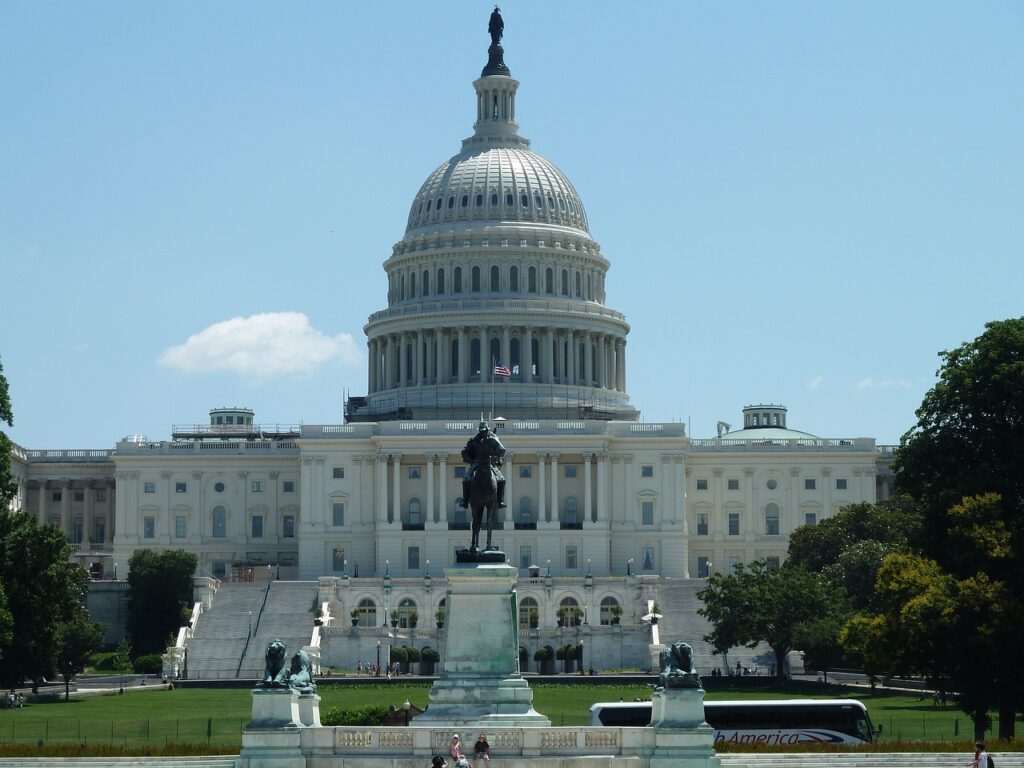Main Points:
- The U.S. government is implementing stricter regulations on stablecoins, driven by concerns over financial stability, consumer protection, and anti-money laundering.
- New guidelines are expected to increase regulatory oversight, enhance transparency, and raise barriers to market entry.
- These regulations could have significant ripple effects on the broader cryptocurrency market, including potential price fluctuations and changes in trading volumes.
In recent years, the cryptocurrency market has seen explosive growth, with stablecoins emerging as a key component of this rapidly evolving financial landscape. Stablecoins, which are typically pegged to fiat currencies like the U.S. dollar, offer the promise of price stability in an otherwise volatile market. However, this stability has also drawn the attention of regulators, particularly in the United States, where concerns over financial system risks, consumer protection, and the potential for illicit activities have prompted calls for stricter oversight. As the U.S. government moves to tighten regulations on stablecoins, the future of the cryptocurrency market hangs in the balance.
Background and Purpose of Strengthening Stablecoin Regulations
The U.S. government’s push to regulate stablecoins more rigorously is not a sudden development. It is the culmination of growing concerns about the risks that these digital assets pose to the financial system. As stablecoins have gained popularity as a means of payment and as a store of value, their potential to disrupt traditional financial systems has become more apparent.
One of the primary concerns is the risk that stablecoins could pose to financial stability. Unlike traditional fiat currencies, stablecoins are issued by private companies, often with varying levels of reserve backing. This raises the possibility that a sudden loss of confidence in a stablecoin could trigger large-scale redemptions, potentially leading to liquidity crises and broader financial instability.
Another significant concern is consumer protection. The stability of stablecoins is often taken for granted by users, who may not fully understand the underlying mechanisms that maintain their value. This misunderstanding could lead to significant financial losses for consumers if a stablecoin were to lose its peg to the fiat currency it is supposed to mirror.
Additionally, the anonymity associated with many stablecoin transactions has raised alarms over their potential use in money laundering and terrorist financing. The ease with which stablecoins can be transferred across borders without the oversight of traditional financial institutions makes them attractive to those seeking to evade regulatory scrutiny.
In response to these concerns, the U.S. government is now moving to impose stricter regulations on stablecoins. The goal is to minimize the risks associated with these digital assets while fostering a healthy and sustainable cryptocurrency market.
Impact of New Guidelines on the Stablecoin Market
While the specifics of the new guidelines have yet to be fully revealed, several potential impacts are anticipated based on the regulatory trends observed so far.
Stricter Oversight of Issuers
One of the most significant changes is likely to be the introduction of more stringent requirements for stablecoin issuers. Companies that issue stablecoins may be required to hold more substantial reserves, potentially in the form of high-quality, liquid assets such as U.S. Treasuries. This would ensure that stablecoins are fully backed and that issuers can meet redemption demands even in times of market stress.
Additionally, issuers may face higher capital requirements, designed to absorb potential losses and protect the broader financial system. These measures would increase the cost of issuing stablecoins, potentially leading to higher fees for users or a reduction in the number of stablecoin issuers.
Enhanced Transparency
Transparency is another area where new regulations are expected to have a significant impact. Stablecoin issuers may be required to provide regular and detailed disclosures about the assets backing their tokens, as well as the processes in place to maintain the stability of their pegs. This could include regular audits by third-party firms, providing consumers and regulators with greater confidence in the reliability of these digital assets.
Enhanced transparency could also extend to the governance structures of stablecoin issuers. Companies might be required to disclose the identities of key decision-makers and the policies they follow, ensuring that these entities are held accountable for their actions.
Increased Barriers to Market Entry
The introduction of stricter regulations could also raise barriers to entry for new stablecoin issuers. Compliance with new capital and transparency requirements may be prohibitively expensive for smaller companies or startups, leading to market consolidation. Larger, more established firms with the resources to meet these demands may dominate the market, potentially stifling innovation.
While this could lead to a safer and more stable market, it might also reduce the diversity of options available to consumers. The reduced competition could result in higher costs for users and slower innovation in the stablecoin space.
Ripple Effects on the Cryptocurrency Market and Future Outlook
The tightening of stablecoin regulations is expected to have far-reaching implications for the broader cryptocurrency market. As stablecoins play a critical role in facilitating trades and providing a stable store of value, changes in their regulation could trigger significant market reactions.

Potential Price Fluctuations
One immediate effect of the new regulations could be increased price volatility in the stablecoin market. If issuers are forced to hold more substantial reserves or face higher operational costs, these expenses could be passed on to consumers in the form of fees, potentially affecting the demand for stablecoins.
Additionally, the increased scrutiny and potential market consolidation could lead to fluctuations in the value of stablecoins, particularly those that are not fully backed or that lack transparency. Investors may seek to diversify their holdings or shift their assets to more stable or regulated options, leading to changes in market dynamics.
Decline in Trading Volumes
The regulatory changes could also lead to a decline in stablecoin trading volumes. Higher fees and reduced competition might make stablecoins less attractive for traders, particularly those who rely on these assets for low-cost, fast transactions. This could have a knock-on effect on the broader cryptocurrency market, reducing liquidity and increasing transaction costs.
Moreover, the introduction of stricter anti-money laundering (AML) and know-your-customer (KYC) requirements could deter some users from engaging with stablecoins, further reducing their utility in the cryptocurrency ecosystem.
Emergence of New Business Models
Despite the potential challenges, the new regulations could also spur the development of innovative business models. Companies that can navigate the regulatory landscape successfully may find opportunities to offer new services or products that comply with the stricter guidelines. This could include stablecoins backed by alternative assets, such as commodities or even central bank digital currencies (CBDCs), which might offer greater stability and regulatory compliance.
In the long term, the move towards stricter regulation could lead to a more mature and stable cryptocurrency market. As the industry adapts to the new rules, it may attract more institutional investors, who have so far been cautious due to concerns over regulatory uncertainty and the risks associated with unregulated assets.
The U.S. government’s move to tighten regulations on stablecoins represents a pivotal moment for the cryptocurrency market. While the new rules aim to enhance stability, transparency, and consumer protection, they also pose challenges for issuers and could lead to significant shifts in market dynamics. Investors and industry participants must stay informed about these developments and be prepared to adapt to the changing regulatory landscape.
As the market evolves under the new regulations, it will be crucial for stakeholders to balance the need for innovation with the demands of regulatory compliance. The future of stablecoins and the broader cryptocurrency market will depend on how effectively the industry can navigate these challenges and continue to offer value to users in a more regulated environment.


